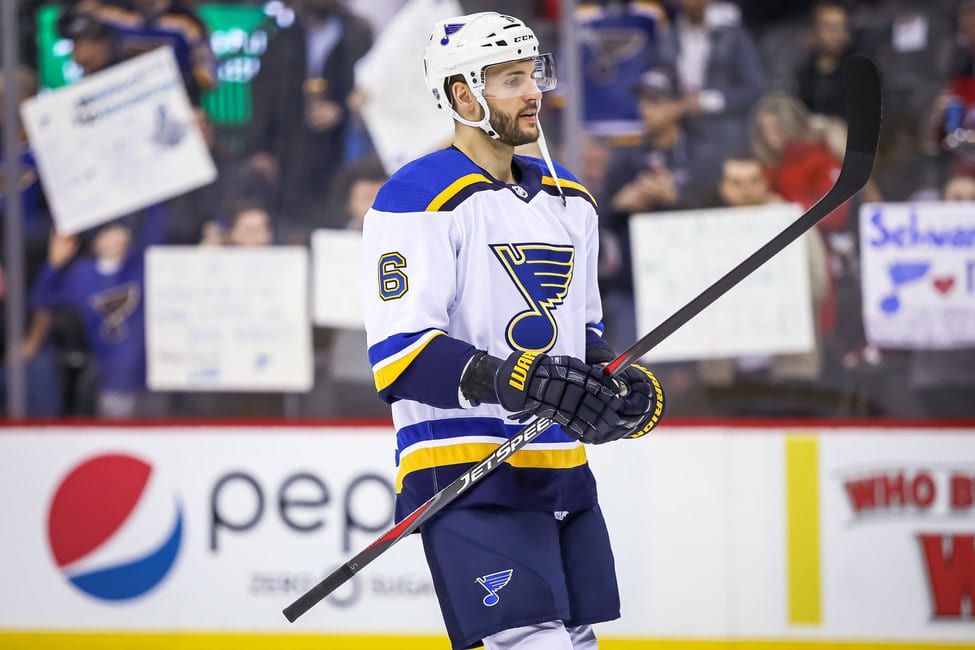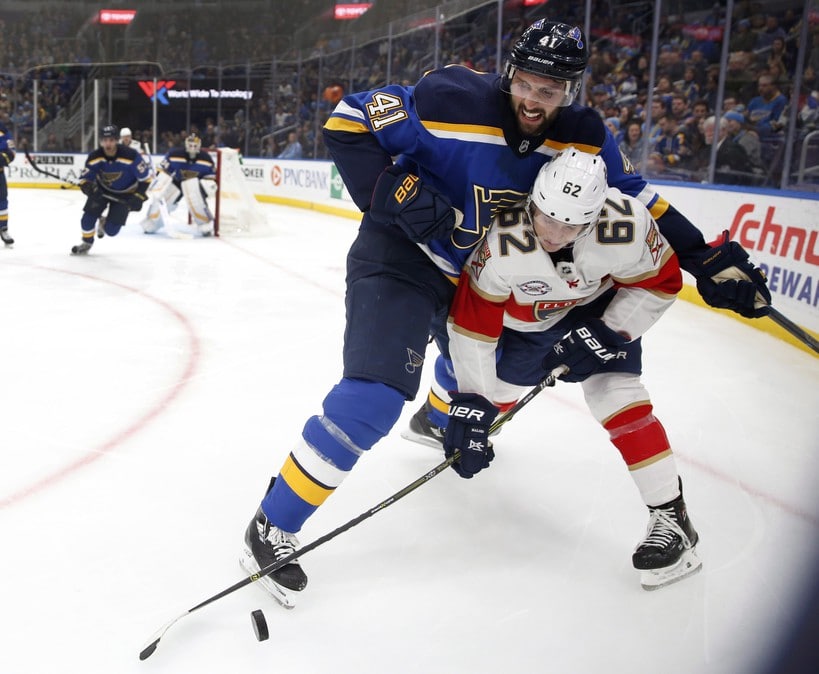Coaches at all levels of hockey will often tell you that depth is a vital key to long-term success in a hockey season. Your stars will win you a game, while your third and fourth liners, or fifth and sixth defensemen, will win you a championship.
Depth, though, is a fickle beast in that it can mean many possible things. On one hand, depth can simply mean having lots of players available in your system and can easily substitute what are ultimately replacement-level players with other replacement-level (or below) types of players. That by definition is depth, you have plenty of players to add who are all at least passable in your system.
For the St. Louis Blues, they don’t just have standard depth, they enter the 2020-21 season with extended, functional and talented, depth, especially on the blue line.
Despite losing former captain and de facto No. 1 defensemen Alex Pietrangelo, the Blues have put together a formidable defensive core that most other NHL franchises would likely trade for theirs, given the opportunity. After signing RFA Vince Dunn to a one-year bridge deal worth $1.875 million, the D core is now set.
Dunn was put into a frustrating place with the pandemic and may have been the most punished Blues player for it. His fair market rate could be as much as double what he signed the one-year deal for, but without arbitration rights and limited options outside the organization, he will be skating for the Blues at a discounted rate.
Talent Throughout the Organization
The Blues have rostered seven defensemen headed into training camp highlighted by free-agent signee Torey Krug, with alternate captain Colton Parayko co-headlining. Justin Faulk and Marco Scandella return after being acquired last season, and Carl Gunnarsson and Robert Bortuzzo round out the bottom half the depth chart. Dunn is the youngest of the bunch at just 24 years old.
Last season, head coach Craig Berube seemed to have a lot of fun mixing and matching the line combinations. In the bubble alone the Blues rolled out six unique defense pairings in just the nine games they played. While that sample is small, it shows Berube’s willingness to fiddle with the lineup and trust his group to mesh well regardless of partner or supposed pairing number.
The Blues have a lot of defensemen who are versatile in the roles they can fill on a successful team, on the roster, and in the minors looking to make the jump. However, given the current makeup, and the lack of a true defined No. 1 defenseman that Alex Pietrangelo provided the organization, there may be less fiddling around with the lineup. The deployment may change, but there isn’t a “catch-all” D-man to flex other guys into that first pairing. That being said, we have some clearly defined archetypes to build from.
The Blues Three Defense Archetypes
The Blues have, by accident or on purpose, built a roster with three different types of players. Two well-defined categories, and a third, less well defined, more fluid category. They also have a handful of solidified roles at the top of the depth chart that will make for simplifying that third category.
The three categories are big defensive presences; small and offensive-minded, and; miscellaneous, or yet to carve out a role. You can be a member of either category one or two, and additionally category three. Robert Bortuzzo, for example, fits into category one as well as category three. After playing just 42 games last season, Bortuzzo has the opportunity to become a clear-cut everyday defenseman, but there are plenty of other category three players who will hope to take that role should the opportunity arise.
Category one players include Colton Parayko, Marco Scandella, Vince Dunn, Carl Gunnerson and Robert Bortuzzo. While they offer a lot more than being big and good in their own end, in the scheme of this team, that is certainly what stands out. Parayko, Scandella, and Dunn are solid in their position in the organization, they are in all likelihood 50% of your opening-game lineup.

Category two has more nuance and is less populated. Justin Faulk and Torey Krug will likely swap back and forth on starting pair duties, though Niko Mikkola may fall into this category as well. Faulk is looking for a bounce-back season after netting just 16 points in 69 games last season and will need to be more impressive to justify his contract. The new guy in the room, Krug, will be thrust into an immediate need to be productive, likely being the lone defender on the first power-play unit and playing first pairing minutes.
Mikkola is a unique case; while he hasn’t produced offensive numbers in a large way, The Athletics’ Scott Wheeler calls him a “fluid skater” and he has shown he can have the ability to control play through his puck handling as well, despite being 6-foot-4 (from “Finding NHL comps for 13 of the Blues’ best prospects”, TheAthleticNHL – 7/10/20). With what seems to be a more high-powered forward group, and with the likely addition of Mike Hoffman, the need for high scoring or offensive defensemen may be lessened. But the surplus of ability these two add is undeniably excellent.
Category three is vast and broad. Through its very nature, it is “the rest” (which may be cheating, sorting-wise). As aforementioned, Robert Bortuzzo fits into this group by virtue of his situation.

Other names to file into this group include Carl Gunnarsson, Niko Mikkola, and Steve Santini. All of these players have NHL experience and will look to make their mark in hopes of getting ice time in the big leagues.
Plenty of Possible Combinations
The Blues brass now has the (sort of) simple task of combining members of category one with category two to create ideal pairings. Mixing and matching strengths, while creating consistency throughout the lineup. For the most part, the Blues will never go without a strong defender and a capable puck handler on the ice at even strength.
The Athletics Jeremey Rutherford reports that Colton Parayko and Torey Krug have been working as a pair in training camp, with Scandella and Faulk playing together as well. Parayko and Krug have high expectations as the primary first-line and team leaders, and Faulk/Scandella have high expectations for a bounce-back year. Until injuries or other issues force the Blues to get creative, those pairings will likely stick, but once a wrench is thrown in, the Blues will have any number of combinations of players to organize the blue line. Potential combinations could include (handedness notwithstanding):
- Krug-Scandella
- Faulk-Parayko
- Dunn-Faulk
- Dunn-Krug
- Parayko-Mikkola
- Scandella-Mikkola
- Krug-Gunnerson
- Faulk-Gunnerson
The Blues will not be without options in the 2020-21 season. Their depth at the Blue line will give them every opportunity to compete, even if injuries or other absences occur. The depth in addition to the roster construction in terms of player type has allowed head coach Craig Berube plenty of options to put forward a competitive blue line each and every night.